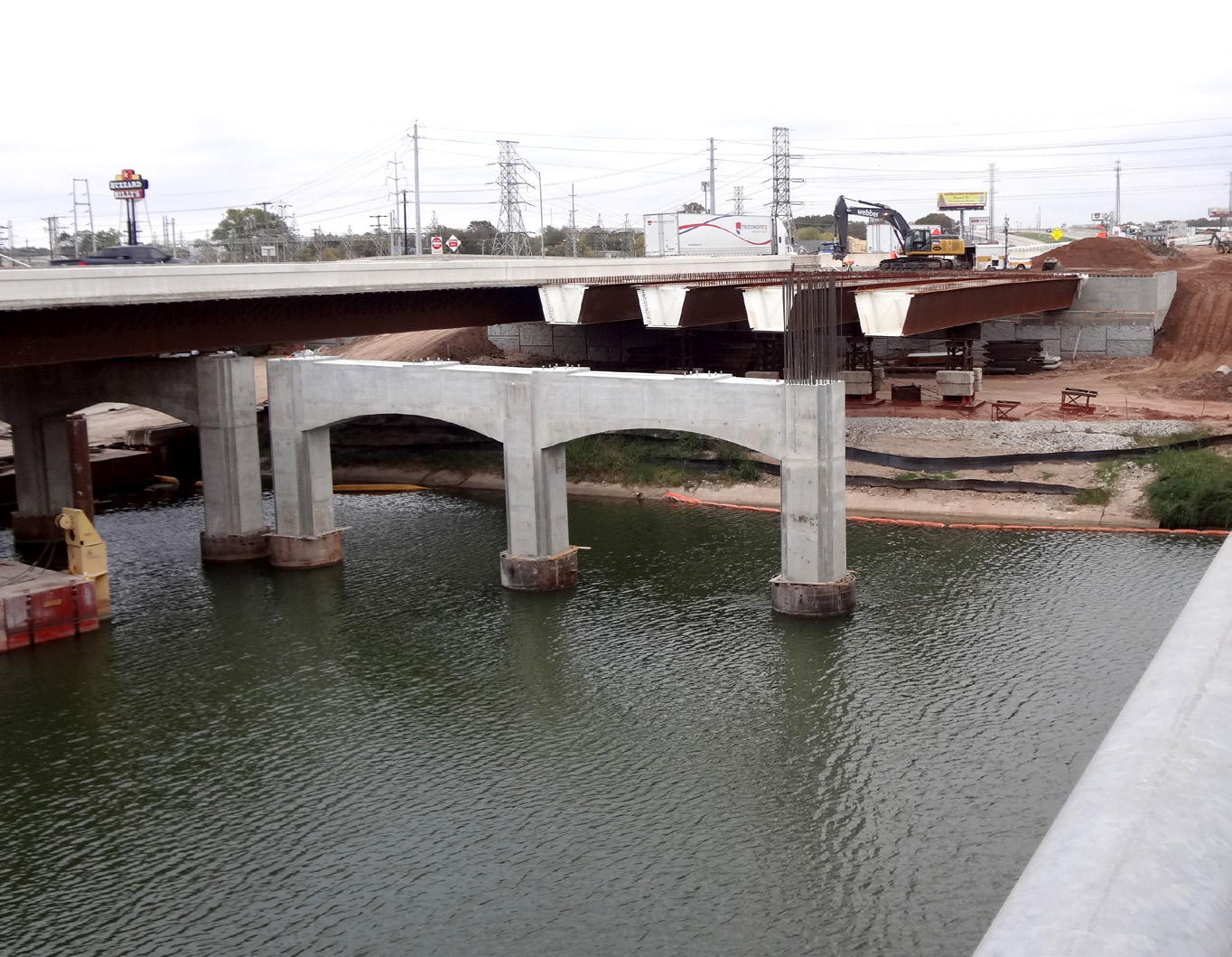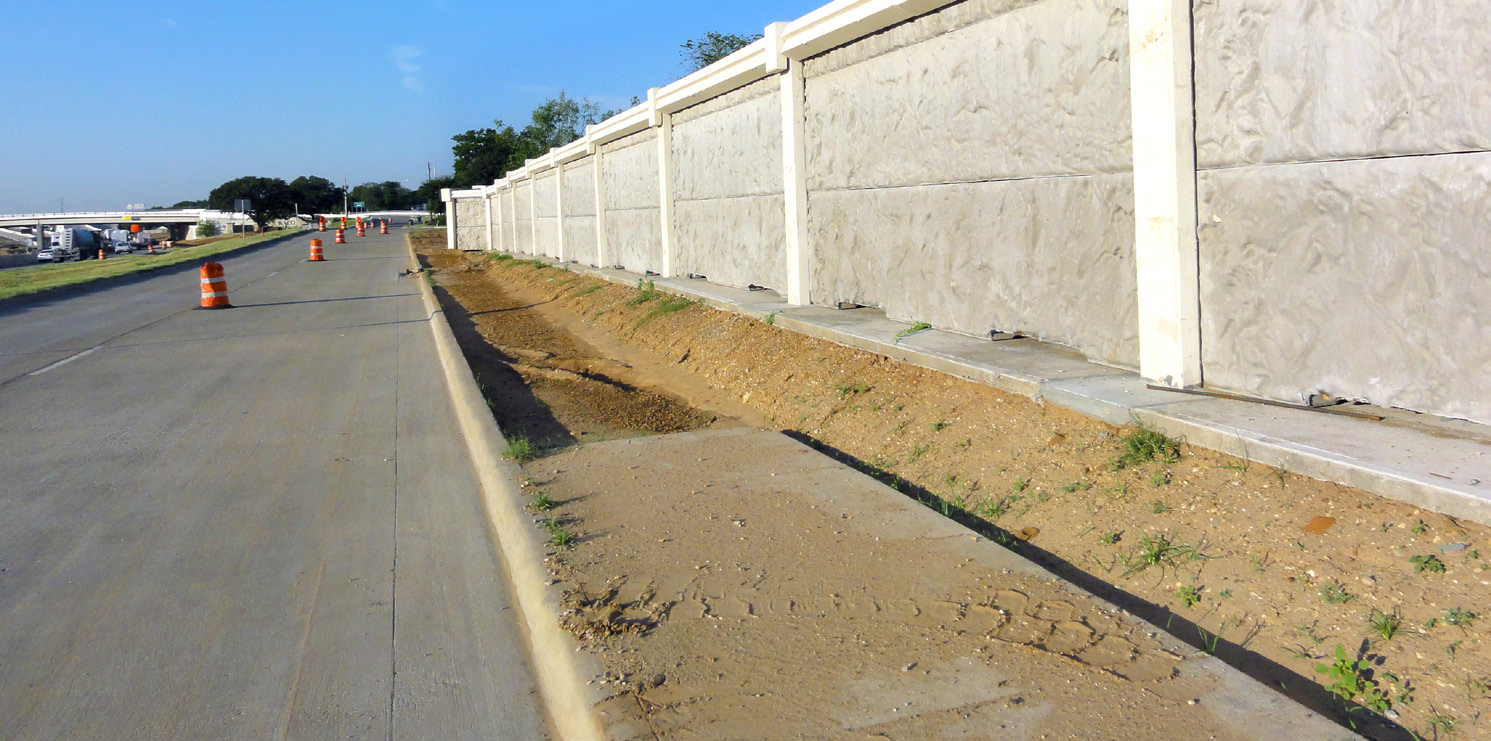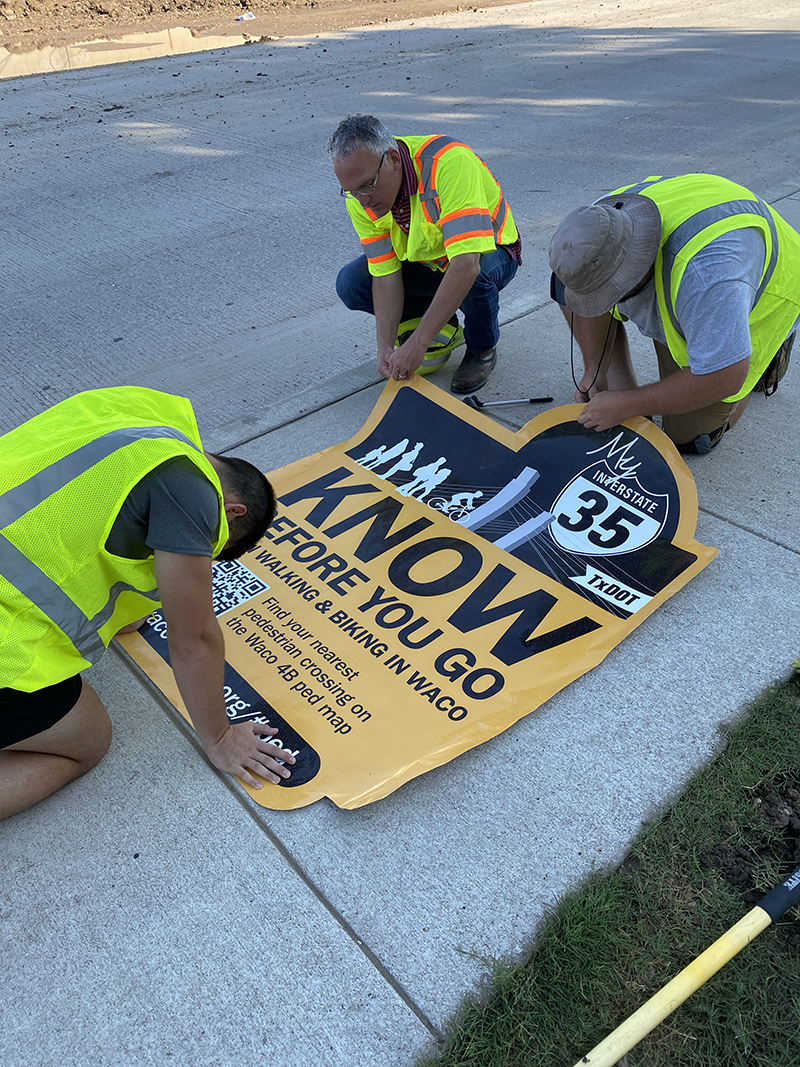The completion of the I-35 Waco Project is right around the corner. TxDOT expects to finish the section in November 2022, offering I-35 travelers one more reason to celebrate this holiday season, says Texas A&M Transportation Institute (TTI) Research Engineer John Habermann. Habermann is the mobility coordinator who liaisons between TxDOT and the local community to lessen the impact of construction.
"From a shift in how folks choose to travel to a worldwide pandemic, there was ample opportunity for something to go wrong on this project," he says. "But almost everything went better than we could have hoped."

Webber LLC of The Woodlands, Texas, began construction on the Waco portion of the corridor known as Main Street Texas—technically known as the 4B Section of the My35 Construction Project—in April 2019. The original completion goal of April 2024 was brought forward one full year to April 2023, but Webber is aiming to beat that by a more ambitious date by a full five months. That's a testament, Habermann says, to a number of factors: good planning; built-in incentives for Webber; community involvement in construction, and TxDOT's flexibility in the build process.
Begun in 2008, the My35 Construction Project is an example of TxDOT's strategy for involving a community in envisioning and implementing improvements to their local leg of the greater I-35 corridor. According to TxDOT's My35 website, "hundreds of Texans have volunteered their time and expertise to develop a blueprint for a safer, smarter and less congested I-35." The My35 Project is the winner of multiple awards for its innovative, collaborative approach.
Incentives for Webber played a vital role in beating the original 2024 construction deadline. TxDOT let the project as an A+B bid, where A is the cost in dollars and B is the time in months construction is expected to take. The department added a tiered bonus structure to the contract that incentivized progress (and penalized delays). "By completing key phases of construction by predetermined, ‘no-excuse' deadlines, Webber has earned all available bonuses," Habermann says.
Though nothing good can be said of the COVID-19 pandemic, during its height in mid-2020, Webber was able to make exceptional progress given the low levels of traffic on the interstate. As Waco opened up following the lockdown, the need for effective access became even more important to business owners, who were trying to bring their customers back. TxDOT, Webber, and community stakeholders worked through the I-35 Steering Committee to optimize that transition, maintaining the processes and safety measures implemented during the pandemic to encourage confidence while facilitating further progress.
To be accomplished efficiently and safely, construction often causes disruptions to the homes and businesses around it. Sometimes it's necessary to close lanes, relocate access roads, and reroute traffic. But TxDOT made it a priority to respect the collective time of the Waco community. To minimize disruptions and delays resulting from unclear expectations or poorly timed construction events, TxDOT invited key stakeholders from the Waco area to participate on the steering committee. Regular updates—via social media, a quarterly newsletter, email alerts, and dynamic message signs posted throughout the corridor—helped keep travelers informed.

Over the past decade or so, the City of Waco and Baylor University have worked hard to enhance their already hand-in-glove relationship. Before the Waco Project started, Baylor relocated their football stadium along the river next to I-35. To alleviate gameday parking woes, Downtown Waco opened up public parking on game days, and that required the use of buses to carry football fans back and forth between the stadium and downtown.
"This is a great example of how Waco and Baylor have learned to work together in recent years," Habermann says. "And from the Waco side of things, we've seen a greater number of students accessing downtown for restaurants and entertainment with improvements that are a direct result of this project. Baylor gets the amenities, and Waco gets the business."
This new, more intertwined relationship created new challenges, however, particularly when it came to pedestrians and cyclists needing to traverse I-35, which bisects the city. Demand rose sharply—particularly during the pandemic—for active travel options like walking and biking, and the Waco Project evolved to meet that need. Though not in the original project plans, TxDOT pivoted to add some 12 miles of new sidewalks for pedestrians and seven new pedestrian crossings under I-35 to provide safer access from campus to downtown. Frontage road lanes (typically 12 feet) were widened to 14 feet to accommodate bicyclists.
To highlight safety for these new, more vulnerable travelers near the interstate, TxDOT implemented the Be Safe Be Seen campaign, an initiative led for the department by TTI Senior Research Scientist Tina Geiselbrecht. Be Safe Be Seen emphasizes education and awareness of pedestrians and cyclists, who are more vulnerable in the traffic environment. In Waco's case, the outreach effort is guided by a local steering committee that includes representatives from the City of Waco, the Greater Waco Chamber of Commerce, City Center Waco, the City of Bellmead, Baylor University, Baylor University Transportation Department, Baylor University Police Department, TxDOT, and bicycle and pedestrian advocacy groups.
These improvements will also help to encourage long-term economic growth and development within the community. The new geometry of I-35 makes it easier for visitors to travel to Waco along I-35 and, specifically, to facilities like Baylor's new Hurd Welcome Center (slated to open in summer 2023). As conventions and conferences come to town and use local facilities for their events, attendees can travel to Downtown Waco for food, drink, and fun more easily—and safely—than ever before. And it was all accomplished way ahead of schedule and on-budget.
"In all transportation improvement projects, TxDOT seeks to minimize impacts on local," explains TxDOT Waco District Engineer Stan Swiatek, who's overseen the Waco Project since its inception. "For the Waco community (which is also my home), it was always our goal to help Waco get on with being Waco—and enhance the community's mobility and traveling safety any way we can."

Jake Smith
I-35 Public Information Officer
254-867-2705
Contact My35
In addition to coordinating construction, TxDOT’s I-35 Waco District team monitors performance metrics for the corridor such as: